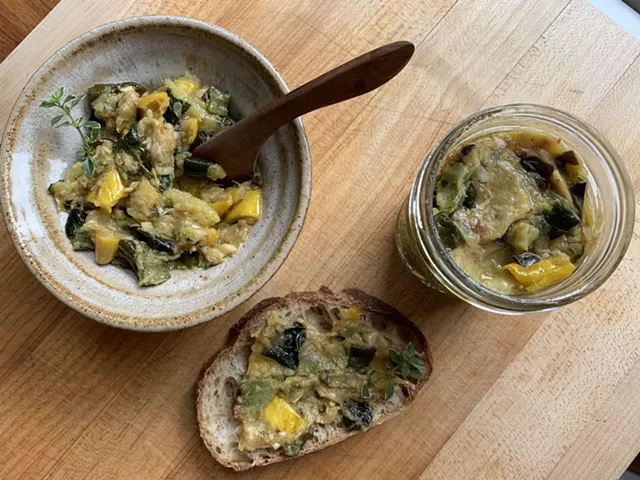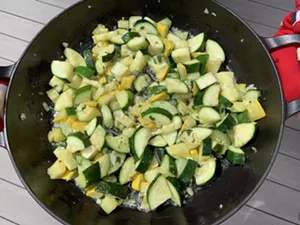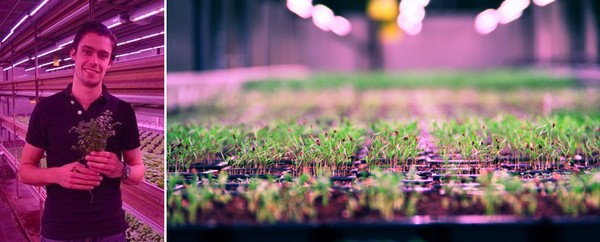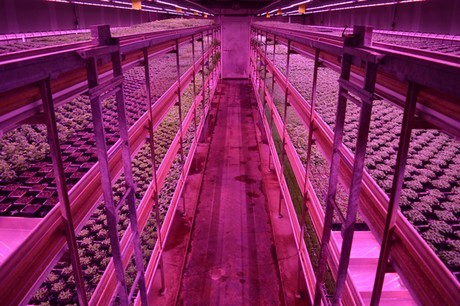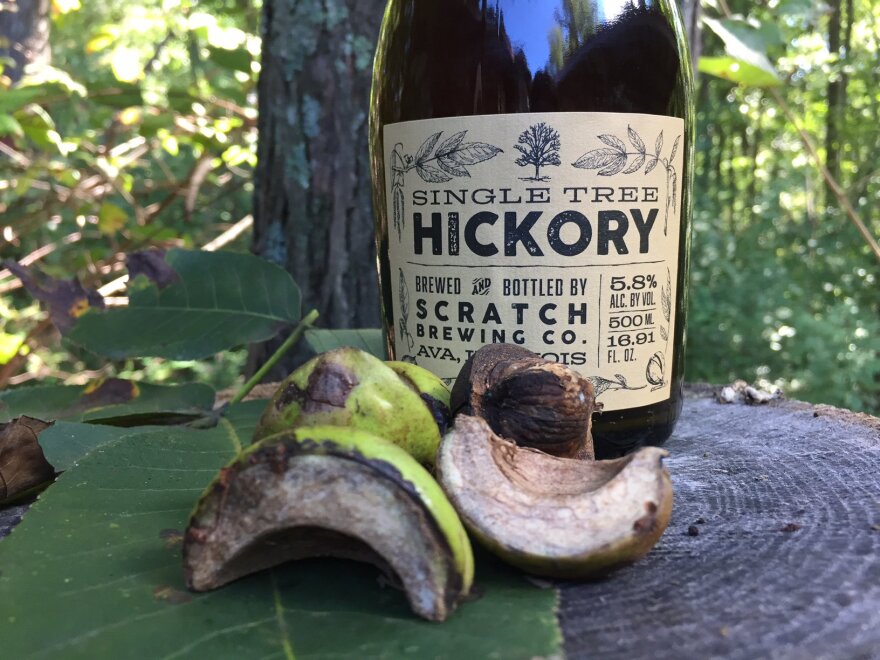A handful of freshly chopped or torn herbs can elevate any home-cooked meal from good to great. And when you can pick those herbs seconds before serving your meal? Well, that's just about as good as it gets.
Growing your own herbs can save you money and prevent food waste. Rather than buying a big, expensive container of one herb (that goes bad before you can figure out what to do with all of it), you can snip off as much or as little as you need, when you need it. As an added bonus, a few pots of greenery can really liven up your kitchen. Yes, it's time to become the urban farmer you always knew you were destined to be.
Two things to consider before you begin your herb farming journey:
- You'll need a spot with plenty of sunlight; most herbs will need between four and six hours of full sunlight to be happy. Before you start buying pots and seeds, figure out how many areas in your apartment meet your sun requirements, and how many pots they can accommodate.
- All herbs need good drainage. A plant that is draining properly will allow water to flow freely through the soil to prevent roots from sitting in water and rotting. Buy potting soil that encourages drainage, and make sure your pots include a hole at the bottom to allow excess water to drain.
Below, check out our top 10 favorite indoor herbs, plus how to grow them and what to use them in. Happy growing!
Basil
If you've got a windowsill with plenty of light, growing basil will be a breeze. Easy to grow from seed, basil needs at least four hours of full sunlight. Keep the soil fairly moist and watch your seeds transform into adorable little basil sprouts in a matter of days. In two to three weeks you'll have plenty of fragrant basil leaves! Use them in a summery caprese salad, to garnish a homemade pizza, or blitzed up with nuts and parmesan for a flavorful pesto.
Bay Leaves
If you like cooking with dry bay leaves, wait 'til you try them fresh! They've got a much more pungent flavor, and they make a great indoor plant. Growing bay leaves from seeds can be tricky, as they take months to germinate. Try starting with a seedling so you can get to cooking with them ASAP. Place your bay leaf plant in a sunny area with plenty of air circulation, and let the soil get dry between waterings. Enjoy your home-grown bay leaves in everything from mushroom risotto to bolognese sauce and beyond.
Chives
For fresh chives at your fingertips, place your chive plant in a super sunny area—we're talking six hours of full sun, if you can manage it. Water frequently and trim using clean scissors when the plant is at least six inches tall, cutting about two inches above the soil. Add a handful of freshly chopped chives to brighten up your homemade egg salad, loaded potato soup, or omelet.
Dill
Dill can easily be grown from seed and will take about six to eight weeks to grow into a mature plant. Make sure your plant is getting five to six hours of full sunlight a day, and allow the soil to dry out in between waterings. You can use your homegrown dill to add flavor to all sorts of recipes, from spanikopita to matzo ball soup.
Oregano
Fresh oregano is incredibly flavorful, and it's used in a wide variety of cuisines. To grow it yourself, start from seeds, an existing plant, or leaf cuttings. Give your plant as much sun as possible, and let the soil dry out between waterings. Use your fresh oregano to make chimichurri, Greek salad, or these ultra-cheesy enchilada meatballs. Fresh oregano can always be substituted for dried, just start small as the fresh leaves are far more pungent.
Parsley
Parsley is one of the most ubiquitous herbs in American cooking, and having it at arms reach is so useful when you need to add a pop of green or some verdant freshness to your cooking. Start parsley plants from seed or buy an existing plant, and keep it in the sunniest place in your house—ideally with six hours of full sun. Give your parsley plants a decent watering once a week, maybe twice if it's particularly hot. Use your parsley bounty in shrimp scampi, to garnish garlicky spaghetti, or mix it into a compound butter for our garlic butter salmon.
Rosemary
This hearty herb is one of our favorites to grow indoors. Give rosemary as much sunlight as you can (six hours, ideally) and let the soil dry out between waterings. To encourage growth, trim your rosemary regularly, cutting off no more than ⅓ of plant at a time. Use rosemary in oven-roasted potatoes, a refreshing gin fizz, or, if you're feeling fancy, juicy roast lamb.
Sage
Another super hearty herb, sage grows well year-round indoors. It prefers medium to full sunlight and intermittent waterings. Sage leaves are a staple in fall and holiday cooking, so naturally it's great in sausage stuffing, butternut squash ravioli, and turkey gravy.
Tarragon
With a subtle anise flavor, French favorite tarragon is a great addition to any windowsill herb collection. Tarragon likes five to six hours of full sunlight and intermittent watering. Try it in chicken salad, sprinkled on top of roasted zucchini, or in a panzanella salad.
Thyme
Happy in lots of sunlight, thyme is a hearty indoor herb with countless uses. This low maintenance plant can be grown from seeds or clippings, but with pots of thyme available just about everywhere, there's no need to propagate. We love the sweet and earthy flavor of thyme in dishes like classic roast chicken, baked cod, and stuffed mushrooms.
This content is created and maintained by a third party, and imported onto this page to help users provide their email addresses. You may be able to find more information about this and similar content at piano.io
The Link LonkSeptember 01, 2020 at 03:25AM
https://ift.tt/2EWUzQo
Best Indoor Herb Gardens - Best Herbs To Grow Indoors - Delish
https://ift.tt/3eCf9lu
Herb















